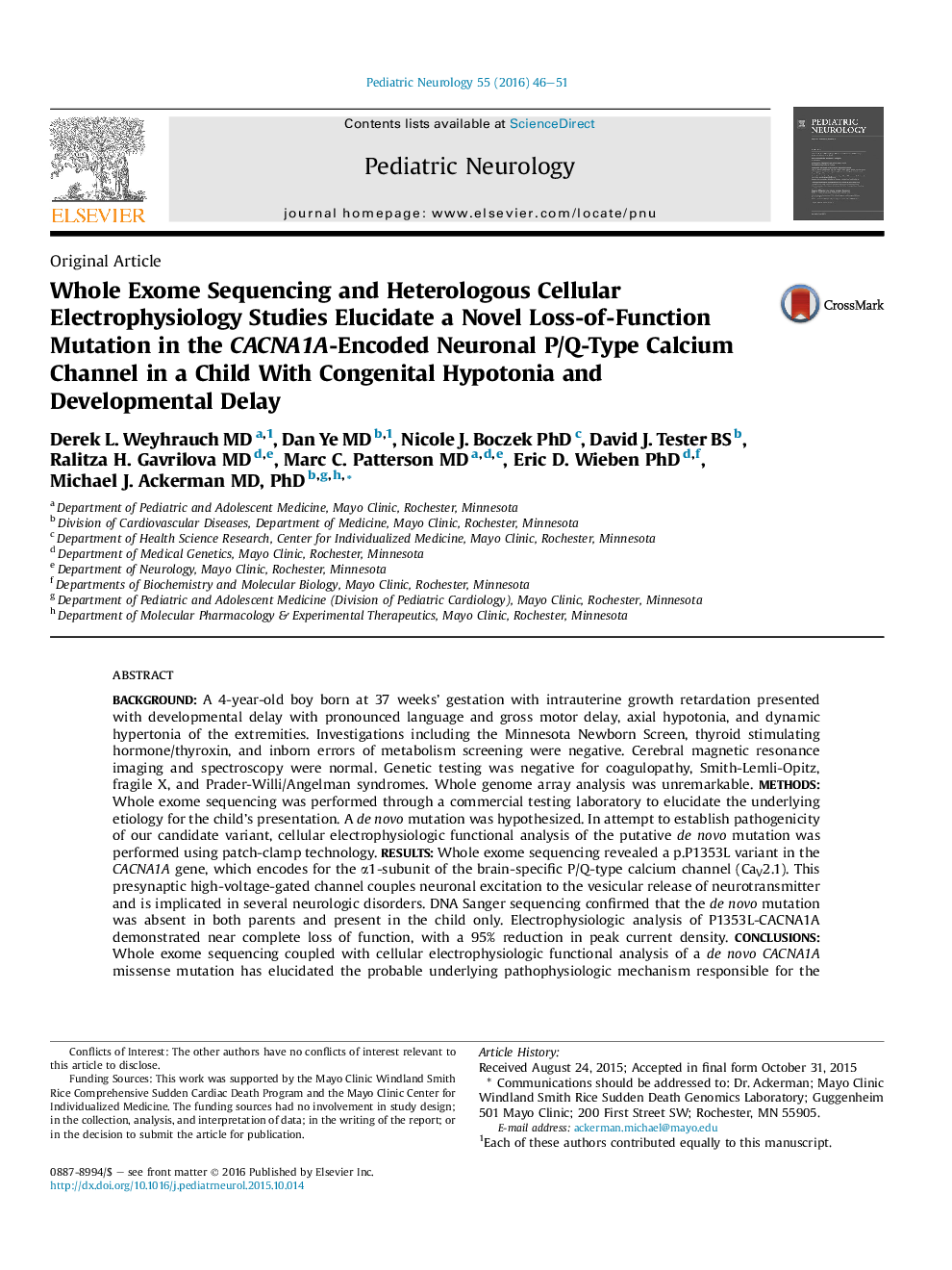| کد مقاله | کد نشریه | سال انتشار | مقاله انگلیسی | نسخه تمام متن |
|---|---|---|---|---|
| 3084565 | 1581271 | 2016 | 6 صفحه PDF | دانلود رایگان |

BackgroundA 4-year-old boy born at 37 weeks' gestation with intrauterine growth retardation presented with developmental delay with pronounced language and gross motor delay, axial hypotonia, and dynamic hypertonia of the extremities. Investigations including the Minnesota Newborn Screen, thyroid stimulating hormone/thyroxin, and inborn errors of metabolism screening were negative. Cerebral magnetic resonance imaging and spectroscopy were normal. Genetic testing was negative for coagulopathy, Smith-Lemli-Opitz, fragile X, and Prader-Willi/Angelman syndromes. Whole genome array analysis was unremarkable.MethodsWhole exome sequencing was performed through a commercial testing laboratory to elucidate the underlying etiology for the child's presentation. A de novo mutation was hypothesized. In attempt to establish pathogenicity of our candidate variant, cellular electrophysiologic functional analysis of the putative de novo mutation was performed using patch-clamp technology.ResultsWhole exome sequencing revealed a p.P1353L variant in the CACNA1A gene, which encodes for the α1-subunit of the brain-specific P/Q-type calcium channel (CaV2.1). This presynaptic high-voltage-gated channel couples neuronal excitation to the vesicular release of neurotransmitter and is implicated in several neurologic disorders. DNA Sanger sequencing confirmed that the de novo mutation was absent in both parents and present in the child only. Electrophysiologic analysis of P1353L-CACNA1A demonstrated near complete loss of function, with a 95% reduction in peak current density.ConclusionsWhole exome sequencing coupled with cellular electrophysiologic functional analysis of a de novoCACNA1A missense mutation has elucidated the probable underlying pathophysiologic mechanism responsible for the child's phenotype. Genetic testing of CACNA1A in patients with congenital hypotonia and developmental delay may be warranted.
Journal: Pediatric Neurology - Volume 55, February 2016, Pages 46–51